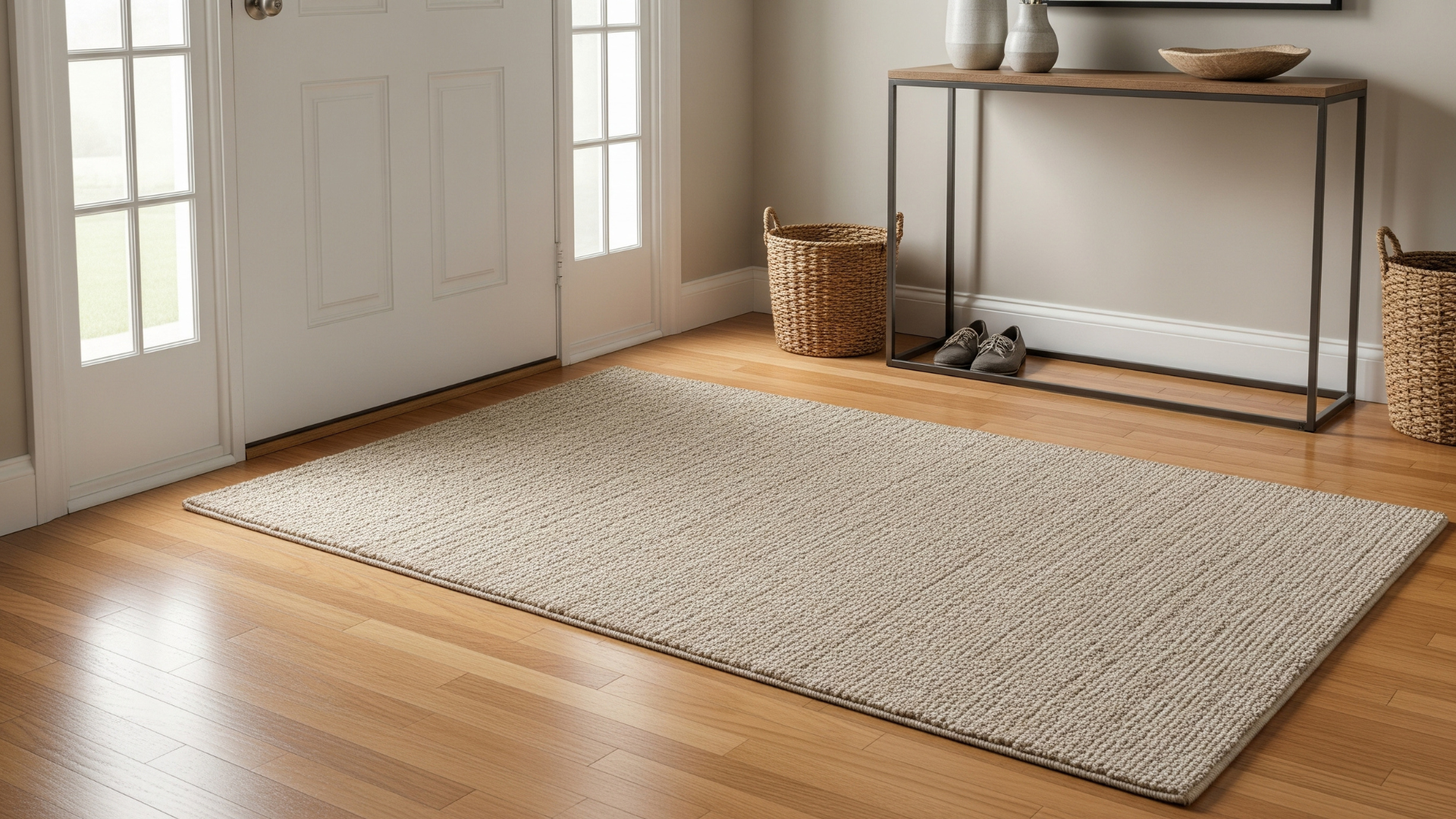Picking the right rug size for your entryway might seem like a small thing, but it makes a big difference.
A rug that’s too small can feel lost, while one that’s too big might get in the way. I’ve seen how tricky it can be to find one that actually fits well and looks good.
That’s why I’m here to help you figure it out with clear, easy tips.
I’ll walk you through common sizes, how they match different spaces, and simple placement ideas that work.
You won’t need any design background, just a few helpful details to make your space more welcoming and comfortable.
If you’ve been unsure about what size to pick, you’re in the right place. Let’s make this choice easier for you.
Why Rug Size Matters in the Entryway?
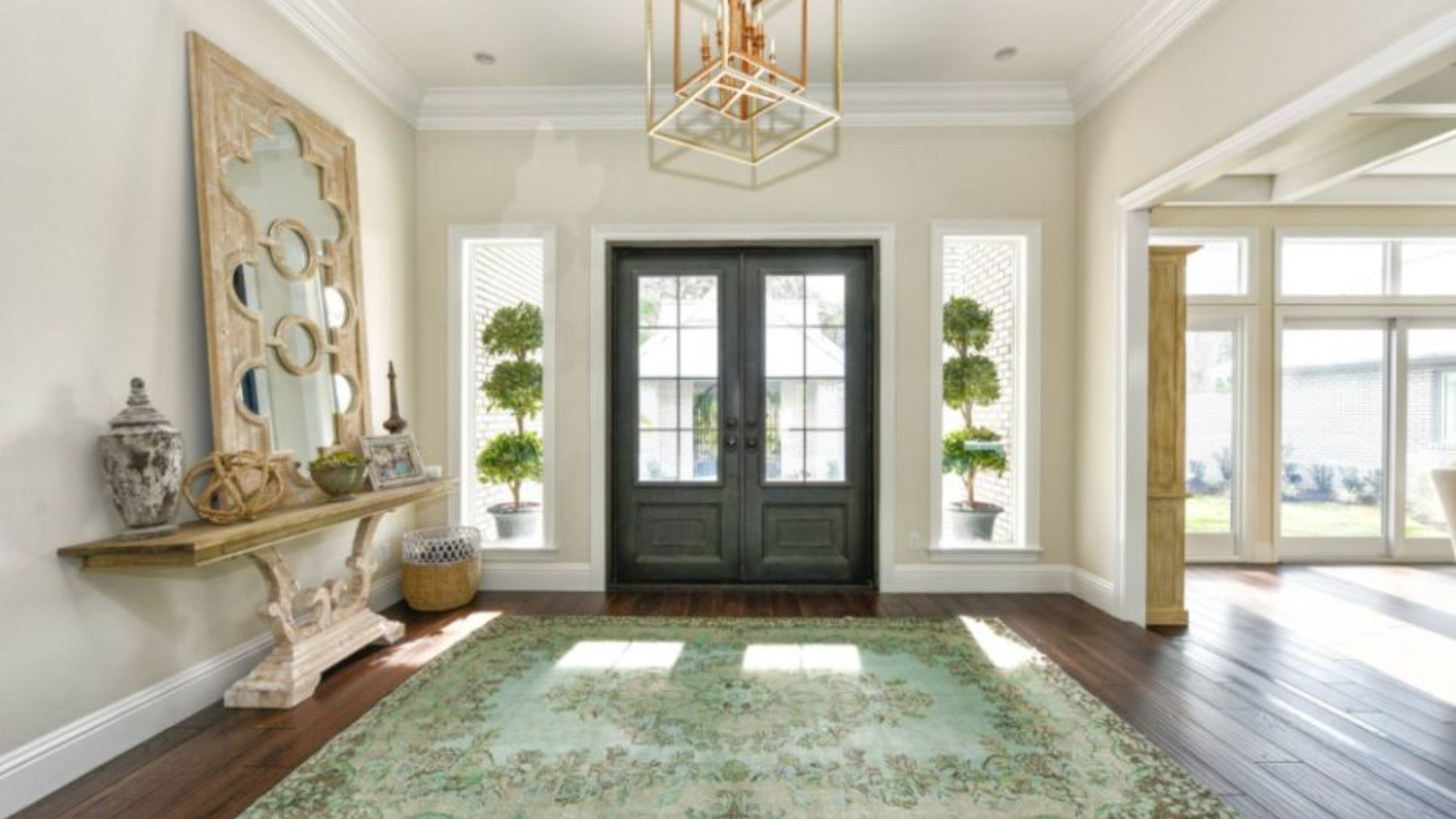
The size of your rug can change how your entryway feels and works. If it’s too small, it might look like an afterthought and leave your floors exposed.
If it’s too big, it could block doors or make the space feel tight. The right size helps everything look balanced and neat.
It also makes walking in and out safer by keeping the rug in place and catching dirt or water from shoes.
A well-sized rug can help set the tone for the rest of your home. It shows where the entryway begins and keeps that space feeling separate, even if you have an open layout.
It also protects your floors from scratches and stains. Getting the size right means your entry looks tidy, feels welcoming, and works better every day.
You don’t need to guess-just match the rug size to the space and how it’s used.
General Sizing Guidelines for Entryway Rugs
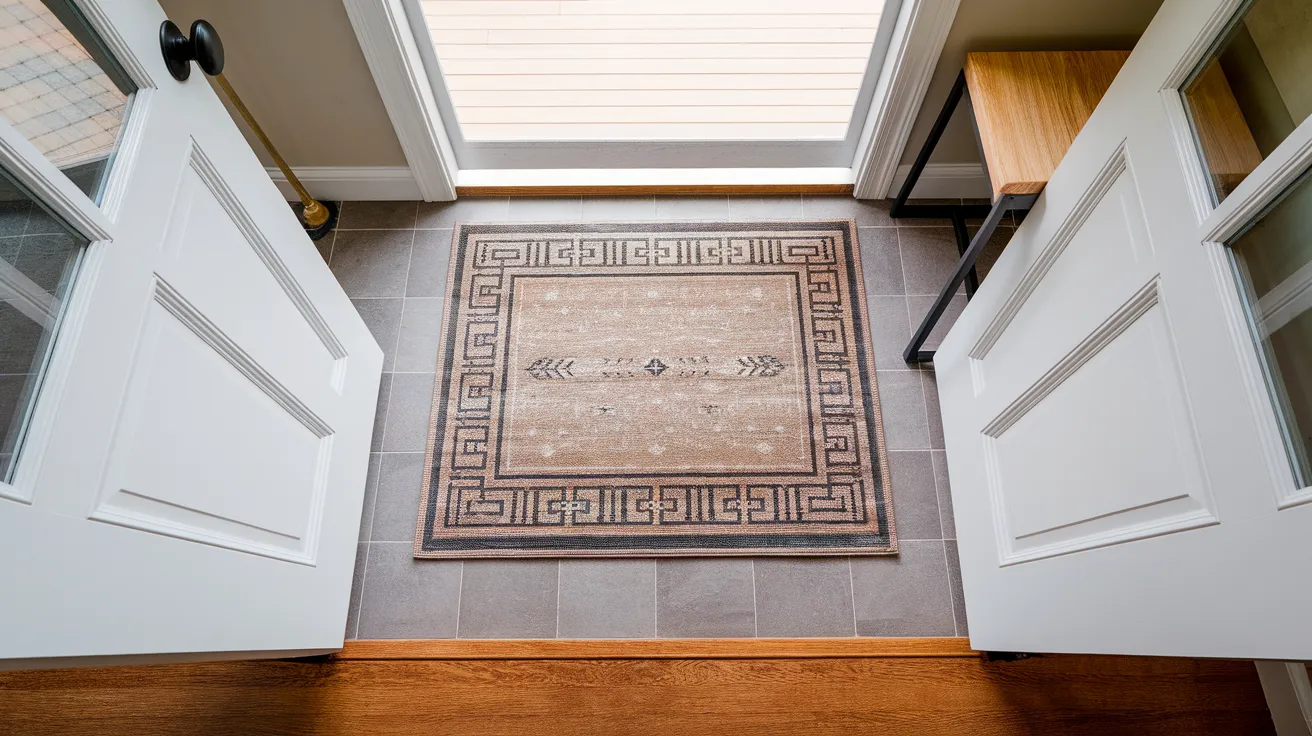
Getting the size right isn’t just about how the rug looks-it also affects how the space feels and functions.
A rug that’s too tight or placed poorly can make your entryway seem messy or even cause people to trip.
The goal is to keep things balanced, open, and safe. These simple tips can help you choose a rug that fits well and feels right.
- Leave visible floor space: Aim for 6 to 18 inches of exposed flooring around the rug’s edges to keep the space looking clean and balanced.
- Check door clearance: Make sure the rug doesn’t block the door or bunch up when it swings open.
- Mind furniture placement: If you have a bench, table, or cabinet, the rug should fit comfortably around it without crowding or sliding underneath.
Common Entryway Rug Sizes and Their Use
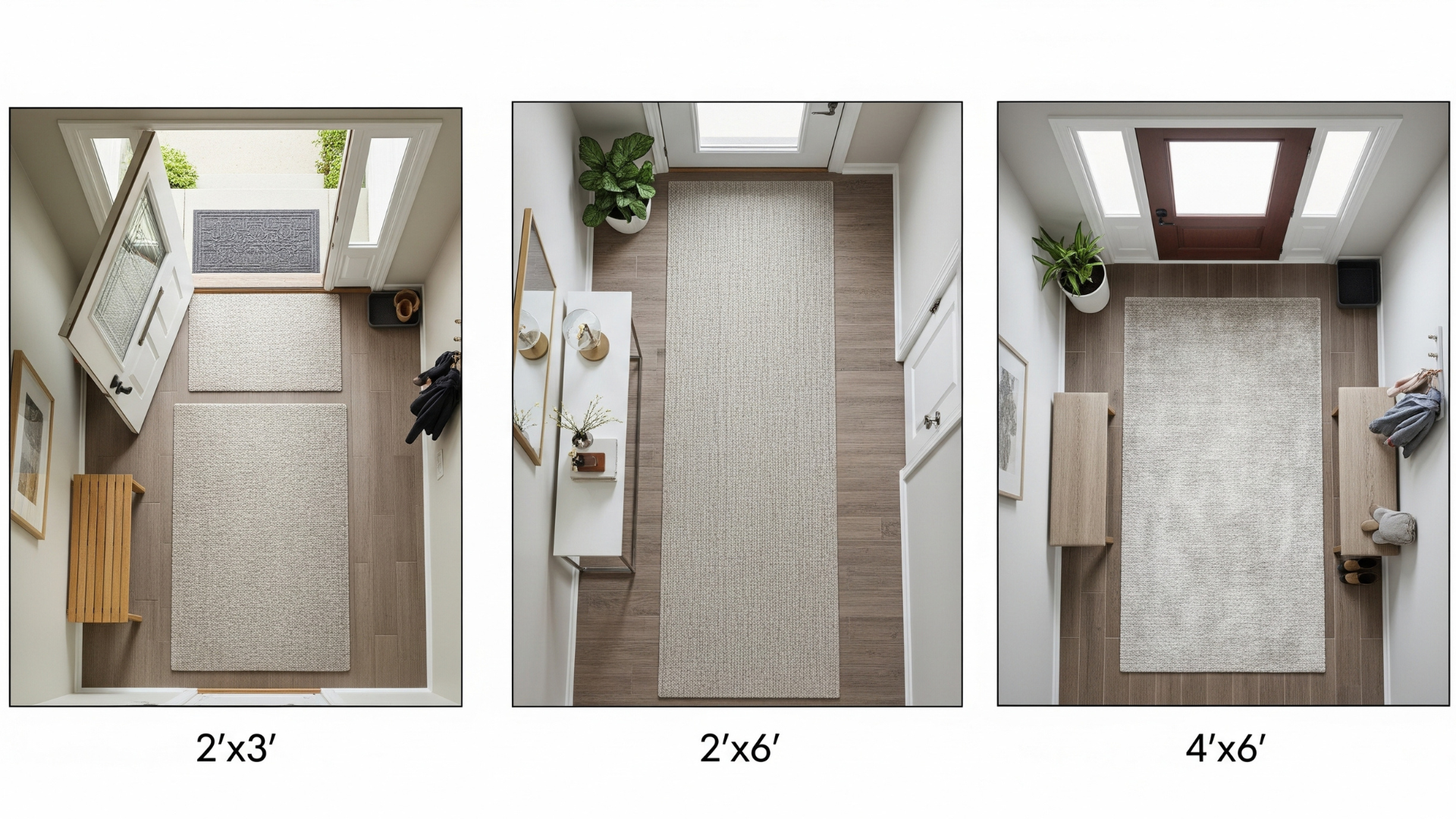
Selecting the right rug size depends on the space and its function. These are some guidelines:
- Small Rugs (2’x3′): Great for compact spaces or just inside the door, perfect for wiping your feet.
- Runners (2’x6′ or longer): Ideal for narrow hallways or long entryways to guide foot traffic.
- Medium Rugs (3’x5′ or 4’x6′): Works well in larger entry areas to define the space without covering too much floor.
Sizing Tips:
- Leave 6 to 18 inches of floor showing around the edges to keep the rug feeling part of the room.
- Ensure the rug doesn’t block doors or bunch up.
- Consider nearby furniture and choose a size that fits comfortably around it.
Recommended Rug Sizes by Entryway Type
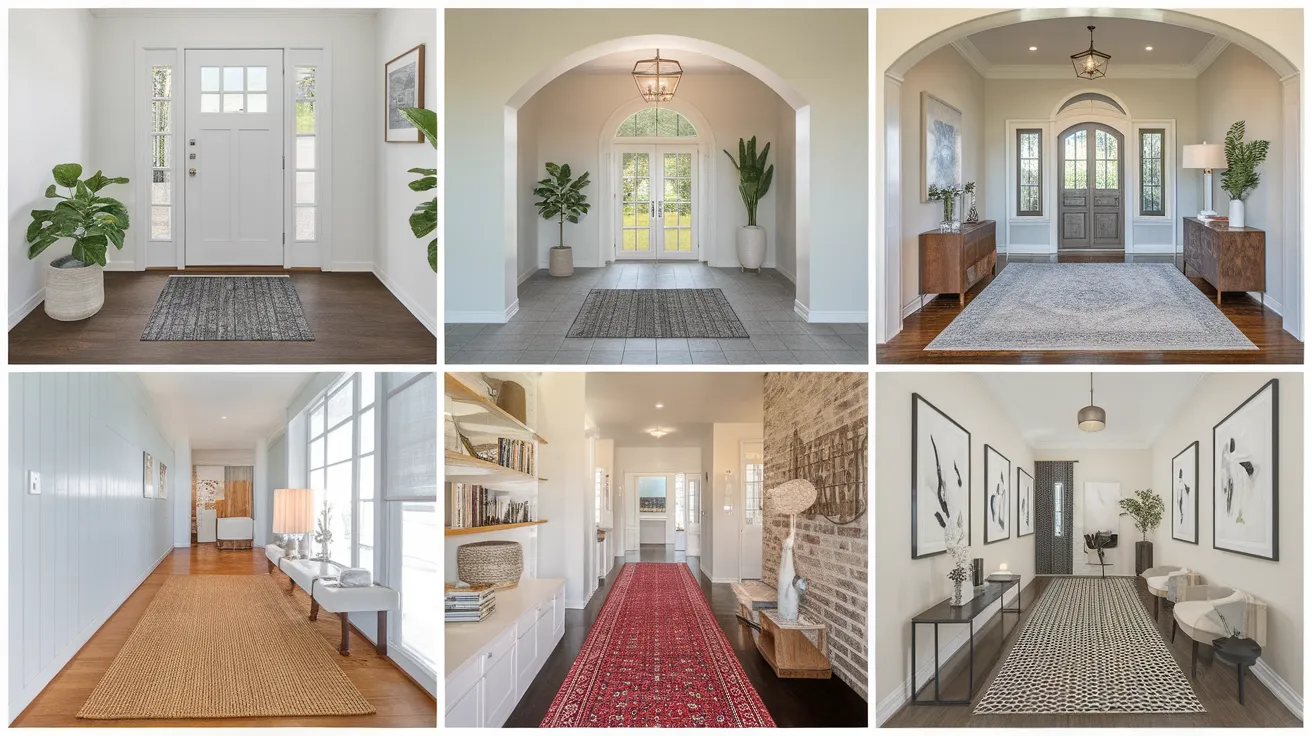
Not all entryways are the same, and that’s why choosing the right rug size depends a lot on your space.
A rug that fits a narrow hallway might look lost in a wide foyer. Matching the rug size to your entryway type helps the area look neat, feel comfortable, and function well.
Below is a quick guide to help you find the best fit for your space.
| Entryway Type | Recommended Rug Sizes | Notes |
|---|---|---|
| Small Entryways/Foyers | 2’x3’, 3’x5’, 2’x6’ runner | Compact coverage, ideal for narrow or tight spaces |
| Medium Entryways | 4’x6’, 5’x7’, 5’x8’ | Covers most of the space while leaving a border |
| Large Entryways/Foyers | 6’x9’, 8’x10’, 9’x12’ | Make a statement-ensure the rug is proportionate and fits well |
| Long Hallways | 2’x8’, 2’x10’, 3’x10’ runner | Choose a length that leaves equal space at both ends |
| Double Door/Wide Entry | 5’x8’, 6’x9’, 6’x6’ square | Accommodates broader spaces, creates a balanced look |
| Circular Foyers | 6’ or 8’ diameter round | Complements curved spaces or staircases |
Using this table as a guide can help make your entryway feel more organized and inviting.
The goal is to choose a rug that suits your space and doesn’t get in the way.
A well-fitted rug adds comfort, protects your floor, and keeps your entry area looking put together.
Choosing the Right Rug Shape
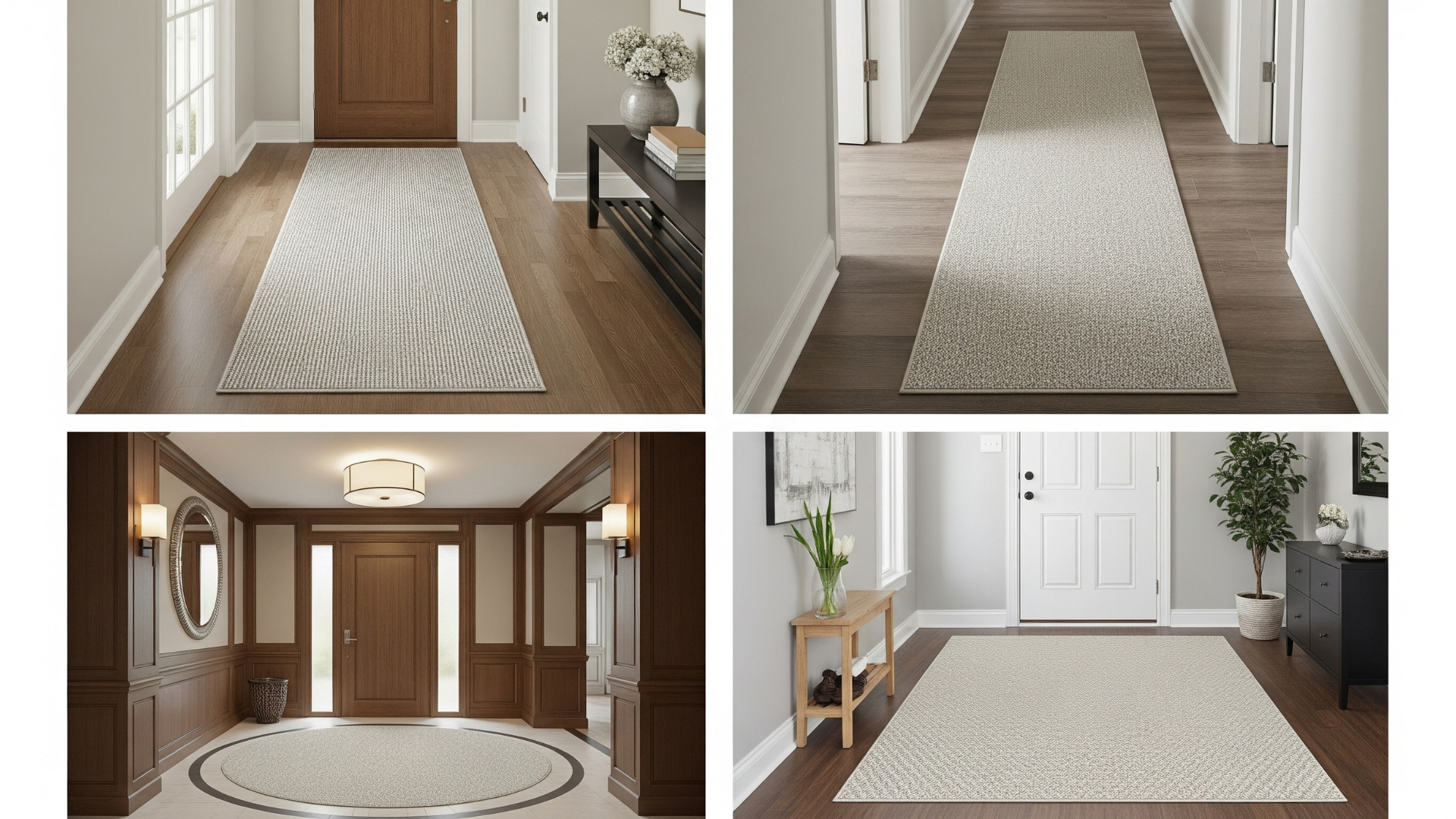
The shape of your rug matters just as much as the size. It should match the shape of your entryway to keep the space looking balanced and neat. Below are some common rug shapes and when to use them:
- Rectangular rugs: Great for most entryways, especially long, narrow, or rectangular spaces. They’re a classic fit that works in many layouts.
- Runner rugs: Perfect for hallways or extended entries. They guide foot traffic and add style without taking up too much room.
- Round rugs: A good match for square or round entryways. They soften corners and work nicely under a central light or decor piece.
- Square rugs: Best for wide or symmetrical spaces where the shape echoes the layout. They help create a balanced and grounded feel.
Common Mistakes to Avoid
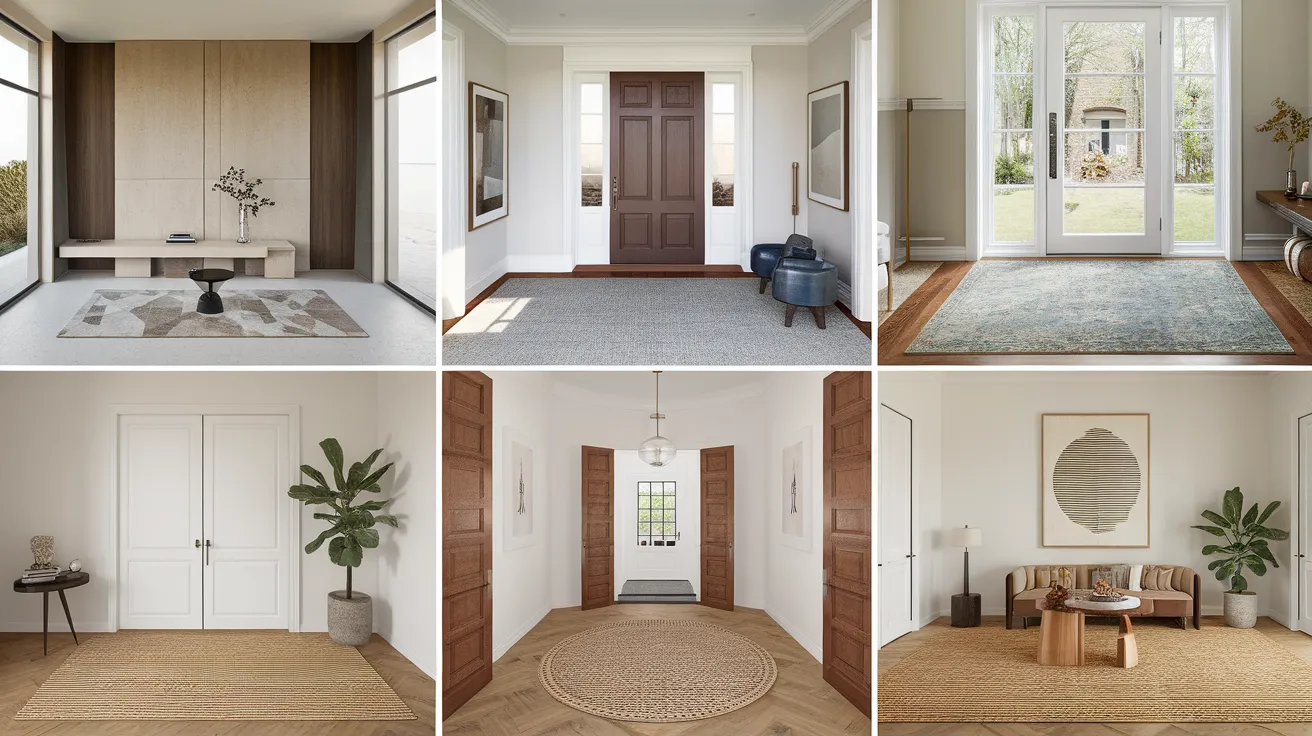
Avoiding a few common mistakes can make your entryway rug choice much easier. Here are things to keep in mind:
- Picking a rug that’s too small: It can look out of place and won’t cover enough area to be useful.
- Choosing a rug that’s too large: This can crowd the space, block doorways, or make the area feel cramped.
- Placing the rug where it blocks the door: Always check that the door opens and closes easily over the rug.
- Overlooking walkways: Make sure the rug doesn’t stick out into paths where people walk or trip over it.
- Using the wrong shape: A rectangle might not work well in a round foyer, and vice versa.
- Ignoring furniture spacing: Rugs should fit nicely with benches or tables nearby, not sit awkwardly around them.
Conclusion
Finding the right rug size for your entryway doesn’t have to be confusing.
I know it’s easy to pick something that looks nice and hope it works, but a little planning makes a big difference.
The right rug should fit the space, match the shape of your entry, and leave enough room around the edges.
A rug that fits well helps your home feel more welcoming right from the front door. It also keeps floors cleaner and safer.
I’ve shared the most common sizes, what types of spaces they suit, and what mistakes to avoid. Now that you know what to look for, you’ll be ready to make a smart choice.
Just take a moment to think about your space, measure if needed, and pick a rug that works with your entry, not against it.
Frequently Asked Questions
How much floor should show around my entryway rug?
You should leave about 6 to 18 inches of floor showing around the edges of your rug. This helps the space look balanced and keeps the rug from feeling too big or too small.
Can I use multiple rugs in a large or open entryway?
Yes, using more than one rug can work well in a big space. Just make sure they match in style or color and don’t crowd each other. This can help define different areas while keeping the look neat.
What materials are best for entryway rugs?
Look for materials that are strong and easy to clean, like wool, nylon, or indoor-outdoor blends. These hold up well against dirt, moisture, and heavy foot traffic.
How do I keep my rug from sliding or bunching up?
Use a non-slip rug pad underneath. It helps keep the rug in place, makes it safer to walk on, and adds extra comfort.

